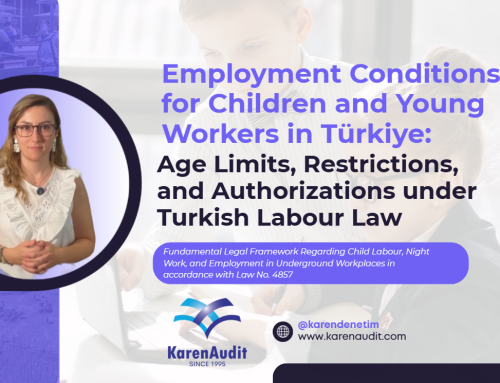November 16, 2022
EIBIS 2022 — European Union overview
EIB INVESTMENT SURVEY 2022
Investment dynamics and focus
EIBIS 2022 shows that on average, at the time of the interviews (April-July 2022), European firms were emerging from the effects of COVID-19 in relatively good shape and with a generally positive outlook. The share of EU firms having invested in 2021 remained relatively stable compared to 2020 (81%), below prepandemic shares (of around 86%). However, EU firms had positive expectations on investment for the whole of 2022, with 20% more firms expecting to increase rather than decrease investment.
Investment needs and priorities
Firms did not signal major investment gaps, with 80% claiming their investment activities over the last three years had been the right amount — similar to EIBIS 2021. Looking ahead to the next three years, investment in replacement remains the main priority for firms’ investment (35% of firms), while the share of firms with no investment plans increased slightly in EIBIS 2022 (11% vs. 9% in EIBIS 2021).
COVID-19 impact
The pandemic was a major shock for EU firms, but policy support was sizable and helped them to survive and transform. However, the impact was uneven across firms and sectors. One-third of firms never saw a year-on-year sales loss due to COVID-19 and, at the time of the interviews, expected a higher sales level in 2022 compared to the pre-pandemic level of 2019. At the other end of the spectrum, about half of firms experienced losses in 2020 and/or 2021 , with 13% not yet expecting to recover from the pandemic-era loss of business in 2022.
Overall, roughly 60% of EU firms have received some form of financial support in response to COVID-19, mostly in the form of subsidies or other assistance that does not need to be paid back. Policy support was more likely to reach firms that experienced sales losses (around 73% benefited from some form of financial support in response to COVID-19, vs. 47% of firms that did not experience any decline in sales). About 10% of firms report that they are still receiving financial support — with 20% being firms that have not yet recovered from the pandemic.
Firms’ transformation, innovation and digitalisation
Policy support was instrumental in enabling firms to transform. They reacted to the shock, with 63% taking action. Compared to EIBIS 2021, more firms report having acted or made investments to become more digital (53% vs. 46% in EIBIS 2021). Furthermore, the share of firms putting effort into supply chain shortening nearly doubled (from 10% to 19%).
On average, 69% of EU firms used at least one advanced digital technology, close to what is reported by US firms (71%).
The period of repeated shocks is having an effect on firms’ innovation. About a third (34%) of EU firms developed or introduced new products, processes or services as part of their investment activities, similar to the share reported in EIBIS 2021 (36%). The innovation gap with the United States is growing over time, as 53% of US firms introduced new products, processes or services in 2022.
International trade
Almost 90% of EU firms have faced international trade-related disruptions since 2021. Nearly as many EU firms see the Russia-Ukraine conflict and COVID-19 as creating obstacles to international trade. Overall, among firms facing disruptions due to international trade, nearly 60% report having taken action to mitigate the impact of these disruptions.
Drivers and constraints
At the time of the interviews, firms were already expecting a deterioration in the economic and political climate, with prospects in their own sectors also worsening. On balance, firms emphasised that the availability of external finance was getting worse in the short term, even more so than at the height of the pandemic. The outlook for the availability of internal finance for investment was also worsening (from clear improvement to stable).
Uncertainty and a lack of skills continue to play a major role as long-term impediments to investment, with 78% and 85% of firms, respectively, mentioning these factors as constraints. Compared to all the previous EIBIS waves, there has been a surge in the share of firms reporting energy costs as a constraint on investment (82%), especially those viewing it as a major barrier (59%). In line with differentiated energy prices and energy intensity across countries and sectors, the share of firms seeing energy costs as a major barrier varies depending on the country, from 24% in Finland to 81% in Greece.
Investment finance
In line with the tightening of global and European financial conditions, firms are beginning to mention a worsening of their outlook for finance. The share of EU firms considered financially constrained is on the rise compared to EIBIS 2021, from 5% in EIBIS 2021 to 6% in EIBIS 2022. There is some clear intraEuropean differentiation, with the share of financially constrained firms being highest in the Central, Eastern and South-Eastern Europe (CESEE) region (9% of firms).
Climate change and energy efficiency
The share of EU firms seeing the transition to stricter climate standards and regulations as a risk or an opportunity remained fairly balanced (each around 30%), with nearly 40% of EU firms continuing to expect no impact from the transition. About 90% of EU firms have already taken action in this respect, with the aim to reduce greenhouse gas emissions. About 57% of firms are making investments in energy efficiency, 64% in waste minimisation and recycling and 32% in new, less polluting business areas and technologies.
In 2021 alone, around 40% of firms invested in energy efficiency.
Around 57% of EU firms see themselves as affected by physical climate change risks, with only a third having taken action to build resilience against these risks. While 20% of firms invested in or developed solutions to reduce or avoid exposure, 14% invested in or developed an adaptation strategy. About 53% of EU firms have already invested in climate change more broadly, and more than half plan to invest over the next three years. Compared to the United States, the European Union continues to forge ahead, both in terms of the share of firms that have invested and the share of firms planning, over the next three years, to invest in tackling climate change.
Firm management, gender balance and employment
In 2021, more than half of EU firms used a strategic monitoring system, remaining above the proportion of firms in the United States. However, EU firms lag behind the United States when it omes to striving for gender balance (58% vs. 62%).
Source: European Investment Bank – EIB INVESTMENT SURVEY 2022 Report
Legal Notice: The information in this article is intended for information purposes only. It is not intended for professional information purposes specific to a person or an institution. Every institution has different requirements because of its own circumstances even though they bear a resemblance to each other. Consequently, it is your interest to consult on an expert before taking a decision based on information stated in this article and putting into practice. Neither Karen Audit nor related person or institutions are not responsible for any damages or losses that might occur in consequence of the use of the information in this article by private or formal, real or legal person and institutions.






